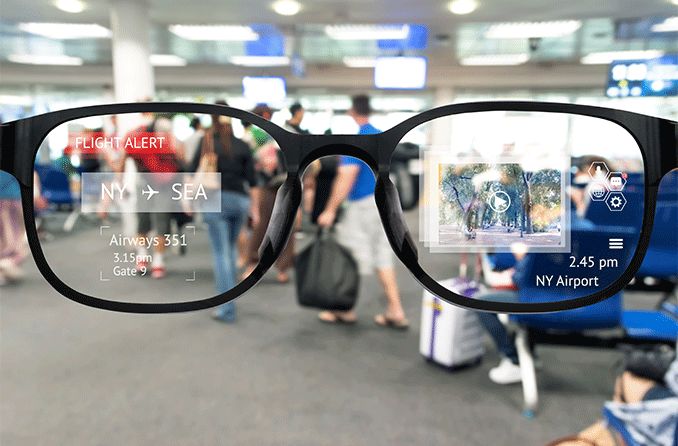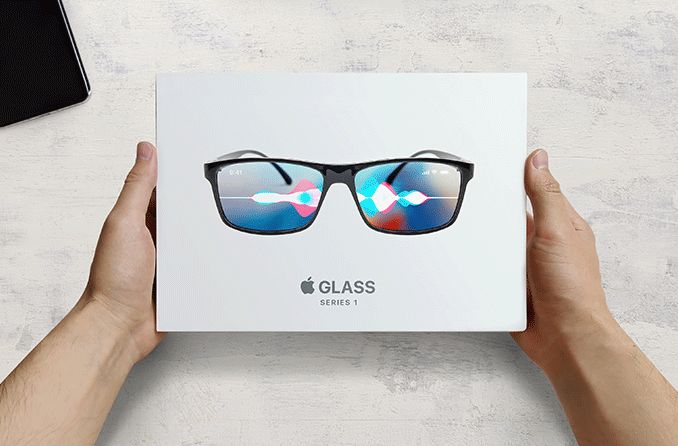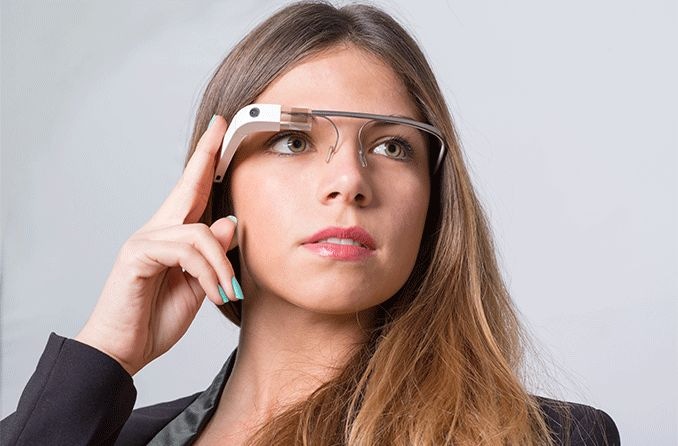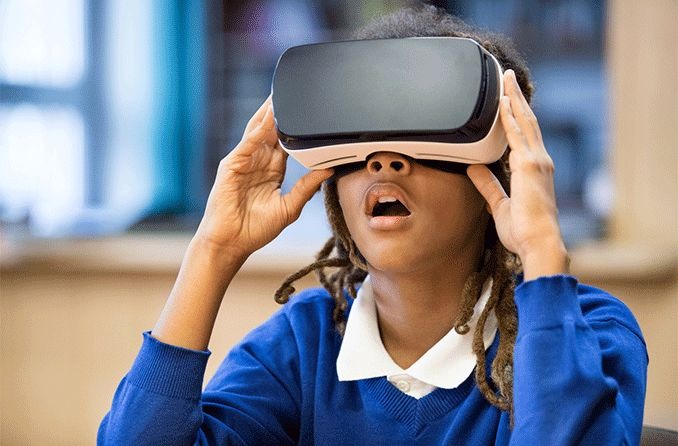Augmented reality (AR) was, for a long time, the stuff of science fiction. Watching “Terminator” or “Robocop” in the 1980s and 1990s, audiences were given a peek at the world through the eyes of a cyborg (an organism with technological enhancements), its field of vision overlaid with data, such as the make and model of a car or the threat level posed by an opponent. More recently, AR tech has appeared in the impressive, near infallible armor of Marvel’s superhero Iron Man.
The average consumer may not be able to buy an Iron Man suit at the local mall (just yet), but if you’ve ever played around with a smartphone app that displays star constellations, added a Snapchat mask or tinkered with the “Pokémon GO” game, then you’re familiar with the concept in its modern-day incarnations.
Augmented reality (AR) glasses simply apply the technology to a wearable accessory.
What are AR glasses?
AR smart glasses vary in shape, size and design, but the thing they all have in common is the enhancement of reality with digital overlays.
There are plenty of reasons people might want to augment their actual experiences with helpful information and data. For instance, imagine sitting in the stands at a football game. While you watch the action, your AR glasses display pertinent stats, scores and player data. Likewise, if you’re walking down the street looking for a place to eat, your AR glasses can display local options, including restaurant ratings and reviews.
Over the past decade, AR glasses have evolved from being wildly expensive, clunky and experimental to being discreet and highly functional. While it is still a stretch to call any brand of AR glasses cheap, the cost has come down dramatically. As more and more companies enter the marketplace, competition is expected to push innovation and design while also continuing to bring down cost.
Nowhere is this trend more apparent than in the world of gaming. Consumers of video games are excited at the prospect of immersing themselves in their favorite adventures, but the average gamer is reluctant (if not unable) to shell out thousands of dollars for gaming equipment, no matter how amazing the experience is reported to be.
This has opened up an opportunity for companies that can deliver even the most basic functionality at a reasonable price, and several organizations purportedly have prototypes in the works.
How do AR glasses work?
There is a wide range of functionality in AR glasses, but in general, the devices use a front facing camera in concert with software that can recognize certain anchors and landmarks.
For instance, if you use AR software designed to help you decorate your home, the software will recognize things like the frame of a window, or the corner where two walls come together. With that data, the software can generate images of curtains and potted plants and “place” them in your field of view by projecting them onto the lens of the glasses on your face.
Of course, this is just one example — in truth, functionality is limited only by the creativity of the developers.
Here are just a few examples of functionality that different companies are working on:
With the integration of a microphone, AR glasses can communicate with Alexa or Siri for voice controlled searches, the results popping up right before your eyes.
Using simultaneous localization and mapping (SLAM) algorithms, your smart AR glasses can gauge the area around you so that you can use hand gestures to control the images you see.
Having message alerts that appear discreetly in the field of view that can be noted and dismissed without the interruption of pulling out your phone.
With integrated GPS technology, virtual arrows will float up into view and help you find your way so that you never get lost again.
If it seems amazing that functionality like this could come in a package as slim and lightweight as a pair of glasses, consider that all of this and more is already being integrated into smart contact lenses.
Cameras that can be controlled with the blink of an eye are being developed along with miniature solar panel technology. What’s more, immediately touching the body allows smart contact lenses to monitor all kinds of health data, from glaucoma symptoms to blood sugar levels.
AR glasses vs. VR glasses
The main difference between virtual reality (VR) glasses and AR glasses is the degree to which reality is changed when you look through them. While AR glasses overlay information on your actual view of the world, VR simulates an entirely different reality.
For this reason, VR tends to utilize increasingly immersive equipment. Instead of glasses, VR is often delivered via a more cumbersome headset. Generally, the gear includes speakers to engage the user’s auditory senses; in some cases, gear may also involve body coverings that can deliver haptic (touch) stimulation.
The aim of VR is to give the impression that the user is somewhere else. The advantage of AR technology over VR is that it allows the user to work, play and interact with the world around them, as it is, with the benefit of additional information.
For companies, the use of AR glasses in training and remote collaboration is helping to connect employees that are geographically diverse. During the 2020-21 pandemic, AR glasses have allowed companies to continue with training and maintain uniformity in execution of tasks, despite the constraints of social distancing.
For the average consumer, AR technology has the potential to integrate smartphone functionality (and more) into our lives via an accessory we are already familiar and comfortable with: our glasses.
What companies are working on AR glasses?
For quite some time, Google and Apple have been setting the standard for research and development for AR glasses. More recently, however, new manufacturers have emerged and come to the forefront, including Microsoft, Facebook, Vuzix, Epson and more.
Google became one of the front-runners in bringing AR glasses to market when they launched Google Glass in 2012. Despite the price tag of roughly $1,500, the first 2,000 pairs of Google AR glasses sold out immediately. The company released another 8,000 pairs later that same year, but ultimately Google found themselves up against devices with longer battery life and faster processors. The first Google Glass is generally regarded as a flop.
But Google clearly has no intention of leaving the market any time soon. In the spring of 2020, Google released the Google Glass Enterprise Edition 2. Though available directly to the consumer at $999, this version of the Google AR glasses is intended for jobs in construction and on factory floors, as well as for the medical field.
This iteration of Google Glass uses an open source code that is relatively easy for developers to work with. It’s being marketed as a “headset for the workplace,” which seems evident by the design. The Google AR glasses are not really glasses at all, but rather a frame with an arm that reaches out in front of the right lens.
In another sign that Google is in it for the long haul, they recently bought up the company North, which has been developing AR glasses technology for the last eight years, claiming that the acquisition will further their efforts to create a world where connected devices work together to provide seamless delivery of information.
Apple
There is a great deal of speculation around Apple’s AR glasses. The technology, which they have branded Apple Glass, is still in the works. Some optimistic sources believed the glasses could be released as early as 2021, but recent estimates put the date somewhere in 2025.
What is more certain are the features that are being built into the design of these devices. A Bloomberg report describes the anticipated functionality as similar to the Apple Watch saying that the Apple Glass will "synchronize with a wearer’s iPhone to display things such as texts, emails, maps and games over the user’s field of vision."
There are also rumors that the lenses of the Apple AR glasses will automatically adjust for poor vision using a technology called “optical subassembly.” This kind of functionality would eliminate the need for prescription lenses.
At an estimated $499, the Apple Glass is positioned to be one of the most affordable AR glasses on the market and many are speculating that Apple’s AR glasses will change everything in the world of AR tech, but much remains to be seen.
Microsoft
Google’s biggest competition in the enterprise market is the HoloLens. The Microsoft AR glasses walk a fine line between eyewear and headset and are not intended for everyday use. Instead they provide an immersive experience with detailed 3D imaging that can be manually manipulated.
In January of 2021, Facebook’s Mark Zuckerberg announced that the company would be releasing its first pair of “smart glasses” within the year. While deflecting specific questions about the product, Zuckerberg did say that Facebook’s AR glasses would be “the next step on the road to augmented reality glasses.” The company’s partnership with EssilorLuxottica, maker of Ray-Ban, bodes well for the quality and design of the product released in the fall of 2021.
Vuzix
Traditionally focused on R&D for next generation military displays, Vuzix has more recently moved into the consumer space with the Blade AR Smart Glasses. Touted as one of the first self-contained AR glasses available on the market, Vuzix AR glasses are one of the few that look like standard glasses while still offering built-in stereo speakers and an autofocus camera, all for $799.99.
Epson
Better known for products like printers and copiers, Epson has moved into the augmented reality market with their Moverio AR glasses, aimed at helping businesses with remote service, collaboration and training.
Many more
There are literally dozens of companies working to create and innovate AR glasses and hundreds more aiming to provide apps that will integrate our smartphones with the new technology. From gaming to education to industry, the possibilities are limited only by what developers can imagine.
The augmented road ahead
Augmented reality is no longer the stuff of science fiction. Companies the world over are working on ways to make the tech more integrated and user-friendly, and AR glasses are at the forefront of that revolution. In time, AR glasses will be indiscernible from regular glasses. The price tags will also likely be comparable. But arguably the best part will be that, when we want to, we can take them off.
RELATED READING: Can VR headsets harm your eyes?








